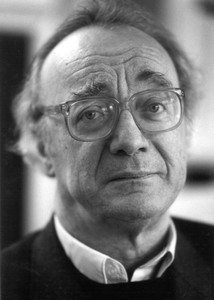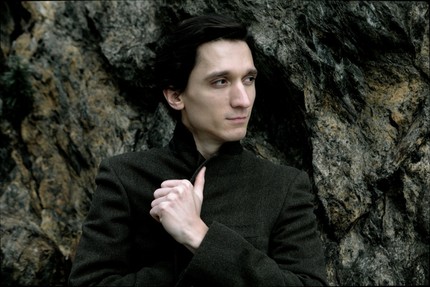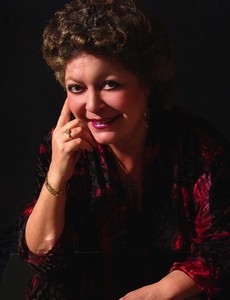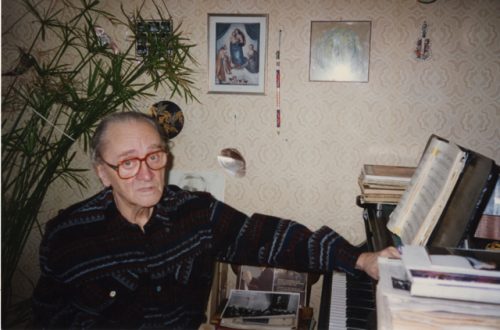
Alfred Brendel |
Alfred Brendel

Somehow, gradually, without sensations and advertising noise, by the mid-70s Alfred Brendel moved into the forefront of the masters of modern pianism. Until recently, his name was called along with the names of peers and fellow students – I. Demus, P. Badur-Skoda, I. Hebler; today it is more often found in combination with the names of such luminaries as Kempf, Richter or Gilels. He is called one of the worthy and, perhaps, the most worthy successor of Edwin Fisher.
For those who are familiar with the creative evolution of the artist, this nomination is not unexpected: it is, as it were, predetermined by a happy combination of brilliant pianistic data, intellect and temperament, which led to the harmonious development of talent, even though Brendel did not receive a systematic education. His childhood years were spent in Zagreb, where the parents of the future artist kept a small hotel, and his son served an old gramophone in a cafe, which became his first “teacher” of music. For several years he took lessons from the teacher L. Kaan, but at the same time he was fond of painting and by the age of 17 he had not decided which of the two professions to prefer. Brendle gave the right to choose … to the public: he simultaneously arranged an exhibition of his paintings in Graz, where the family moved, and gave a solo concert. Apparently, the pianist’s success turned out to be great, because now the choice was made.
- Piano music in the Ozon online store →
The first milestone on Brendel’s artistic path was the victory in 1949 at the newly founded Busoni Piano Competition in Bolzano. She brought him fame (very modest), but most importantly, she strengthened his intention to improve. For several years he has been attending mastery courses led by Edwin Fischer in Lucerne, taking lessons from P. Baumgartner and E. Steuermann. Living in Vienna, Brendel joins the galaxy of young gifted pianists who came to the fore after the war in Austria, but at first occupies a less prominent place than its other representatives. While all of them were already quite well known in Europe and beyond, Brendle was still considered “promising”. And this is natural to some extent. Unlike his fellow peers, he chose, perhaps, the most direct, but far from the easiest path in art: he did not close himself in the chamber-academic framework, like Badura-Skoda, did not turn to the help of ancient instruments, like Demus, did not specialize on one or two authors, like Hebler, he did not rush “from Beethoven to jazz and back”, like Gulda. He just aspired to be himself, that is, a “normal” musician. And it finally paid off, but not immediately.
By the mid-60s, Brendel managed to travel around many countries, visited the United States, and even recorded on records there, at the suggestion of the Vox company, almost almost the complete collection of Beethoven’s piano works. The circle of interests of the young artist was already quite wide at that time. Among Brendle’s recordings, we will find works that are far from standard for a pianist of his generation – Mussorgsky’s Pictures at an Exhibition, Balakirev’s Islamey. Stravinsky’s Petrushka, Pieces (op. 19) and Concerto (op. 42) by Schoenberg, works by R. Strauss and Busoni’s Contrapuntal Fantasy, and finally Prokofiev’s Fifth Concerto. Along with this, Brendle is a lot and willingly involved in chamber ensembles: he recorded the Schubert cycle “The Beautiful Miller’s Girl” with G. Prey, Bartok’s Sonata for Two Pianos with Percussion, Beethoven’s and Mozart’s Piano and Wind Quintets, Brahms’ Hungarian Dances and Stravinsky’s Concerto for Two Pianos … But at the heart of his repertoire, for all that, is the Viennese classics – Mozart, Beethoven, Schubert, as well as – Liszt and Schumann. Back in 1962, his Beethoven evening was recognized as the pinnacle of the next Vienna Festival. “Brandl is without a doubt the most significant representative of the young Viennese school,” wrote the critic F. Vilnauer at the time. “Beethoven sounds to him as if he was familiar with the achievements of contemporary authors. It provides encouraging proof that between the present level of composition and the level of consciousness of interpreters there is a deep inner connection, which is so rare among the routines and virtuosos who perform in our concert halls. It was an acknowledgment of the deeply modern interpretive thinking of the artist. Soon, even such a specialist as I. Kaiser calls him “a piano philosopher in the field of Beethoven, Liszt, Schubert”, and the combination of a stormy temperament and prudent intellectualism earns him the nickname “wild piano philosopher”. Among the undoubted merits of his playing, critics attribute the captivating intensity of thought and feeling, an excellent understanding of the laws of form, architectonics, the logic and scale of dynamic gradations, and the thoughtfulness of the performing plan. “This is played by a man who realized and made clear why and in what direction the sonata form develops,” wrote Kaiser, referring to his interpretation of Beethoven.
Along with this, many shortcomings of Brendle’s playing were also obvious at that time – mannerism, deliberate phrasing, weakness of the cantilena, inability to convey the beauty of simple, unpretentious music; not without reason one of the reviewers advised him to listen attentively to E. Gilels’ interpretation of Beethoven’s sonata (Op. 3, No. 2) “in order to understand what is hidden in this music.” Apparently, the self-critical and intelligent artist heeded these tips, because his playing becomes simpler, but at the same time more expressive, more perfect.
The qualitative leap that took place brought Brendle universal recognition in the late 60s. The starting point of his fame was a concert in London’s Wigmore Hall, after which fame and contracts literally fell on the artist. Since then, he has played and recorded a lot, without changing, however, his inherent thoroughness in the selection and study of works.
Brendle, with all the breadth of his interests, does not strive to become a universal pianist, but, on the contrary, is now rather inclined towards self-restraint in the repertory sphere. His programs include Beethoven (whose sonatas he twice recorded on records), most of the works of Schubert, Mozart, Liszt, Brahms, Schumann. But he does not play Bach at all (believing that this requires ancient instruments) and Chopin (“I love his music, but it requires too much specialization, and this threatens me with losing contact with other composers”).
Remaining invariably expressive, emotionally saturated, his playing has now become much more harmonious, the sound is more beautiful, the phrasing is richer. Indicative in this regard is his performance of Schoenberg’s concerto, the only contemporary composer, along with Prokofiev, who has remained in the pianist’s repertoire. According to one of the critics, he came closer to the ideal, its interpretation than Gould, “because he managed to save even the beauty that Schoenberg wanted, but failed to expel.”
Alfred Brendel went through an extremely direct and natural path from a novice virtuoso to a great musician. “To be honest, he is the only one who fully justified the hopes that were placed on him then,” wrote I. Harden, referring to the youth of that generation of Viennese pianists to which Brendel belongs. However, just as the straight road chosen by Brendle was not at all easy, so now its potential is still far from being exhausted. This is convincingly evidenced not only by his solo concerts and recordings, but also by Brendel’s unrelenting and varied activities in various fields. He continues to perform in chamber ensembles, either recording all of Schubert’s four-handed compositions with Evelyn Crochet, the laureate of the Tchaikovsky Competition we know, or performing Schubert’s vocal cycles with D. Fischer-Dieskau in the largest halls in Europe and America; he writes books and articles, lectures on the problems of interpreting the music of Schumann and Beethoven. All this pursues one main goal – to strengthen contacts with music and with listeners, and our listeners were finally able to see this “with their own eyes” during Brendel’s tour in the USSR in 1988.
Grigoriev L., Platek Ya., 1990





